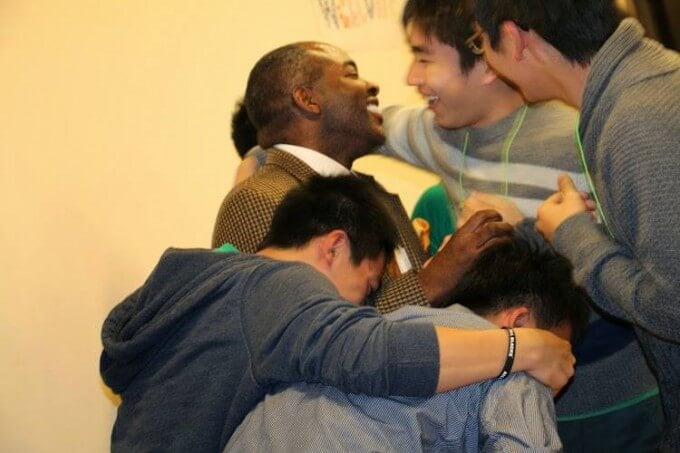This post is Part 3 of a full-length article about ISAK entitled Learning Through Shared Ideas, which was originally published in Nikkei Business Online on May 25, 2015. To read the other 3 sections, click on the links below:
“Learning through Shared Ideas”
– Design Thinking Enables Students Improve Problem-solving Skills and Teamwork
• Part 1 – What is Important for a Head of School?
• Part 2 – What is The Best Time to Go to Bed?
• Part 4 – IDEO x ISAK Special Design Thinking Workshop
No One’s Opinion Is Better Than Anyone Else’s
The ISAK philosophy of reaching conclusions through group discussion might be ideal, but in a school with much more diversity than the average school, it seems that it would be easy for opinions to clash. When asked about this, Jemison mentions Design Thinking, which has been incorporated into the ISAK educational program.
Design thinking, a program utilized by Stanford University, is also advocated by IDEO, the design consulting corporation known worldwide for, among other accomplishments, designing the mouse for Apple Inc. With design thinking, rather than solve a given problem, a team begins by identifying the issues that need to be solved, and then creating a prototype based on everyone’s shared ideas. As evidence is compiled, new value is created.
ISAK students understand that their ideas and opinions are no better than anyone else’s. In order for these students to become change-makers who will transform the world in the future, this is a very important lesson that they are learning through the design thinking process.
“As they learn design thinking, they learn how to value the opinions of others while maintaining their own opinions,” says Jemison. Through this self-awareness, they are able to say, “Your idea might be better than mine. Let’s develop your idea so that we can succeed.” This is difficult thing to say even for adults, let alone for high school students.
To give a specific example, suppose two students working on a project present two different ideas. They will start by trying one student’s idea. Even if it doesn’t work as planned, no one is critical. The second idea is tried, and if it still doesn’t work, they try combining their ideas. This helps them discover the ideal solution.
“The students understand that no one’s idea or good or bad. The important thing is to learn from each other’s ideas, and in the end, come up with a good solution as a team. Every time I see them working on these kinds of projects, I can feel the strength of the ISAK community,” says Jemison. He adds with a hint of pride, “I have never seen them face a problem that they could not solve.”

This post is Part 3 of a full-length article about ISAK entitled Learning Through Shared Ideas, which was originally published in Nikkei Business Online in Japanese – May 25, 2015. To read the first three sections of the article, click on the links below.
• Part 1 – What is Important for a Head of School?
• Part 2 – What is The Best Time to Go to Bed?
• Part 4 – IDEO x ISAK Special Design Thinking Workshop
※本記事は、日経ビジネスオンラインの掲載記事をISAKが翻訳したものです。(転載許可をとっています)




